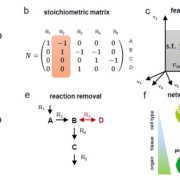
Review: Computational approaches to design and test plant synthetic metabolic pathways (Plant Physiol)
Plant Science Research WeeklyAs photosynthetic organisms, plants are desirable and potentially cost-effective chassis for the production of novel compounds, but they are also inherently metabolically complex. Synthetic metabolic pathways can also improve upon nature by making plants more metabolically efficient. Küken and Nikoloski…

Genome-scale fluxome of Synechococcus elongatus UTEX 2973 using transient 13C-labeling data (Plant Physiol)
Plant Science Research WeeklySynechococcus elongates UTEX 2973 (also known as Synechococcus 2973) has the fastest doubling time of known cyanobacteria, completely replicating itself in just over two hours. This fast growth rate makes it an interesting platform for industrial applications. Hendry et al set out to understand what…
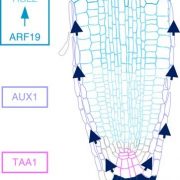
A mechanistic framework for auxin dependent Arabidopsis root hair elongation to low external phosphate (Nature Comms)
Plant Science Research WeeklyPlants respond to a low phosphate environment through increased elongation of root hairs. Bhosale et al. showed that low external P increases levels of the auxin (IAA) in Arabidopsis roots through the TAA1 (TRYPTOPHAN AMINO TRANSFERASE 1)-mediated auxin biosynthesis pathway. At the same time, the auxin…

Cytokinin modulates context-dependent chromatin accessibility through the type-B response regulators ($) (Nature Plants)
Plant Science Research WeeklyThe cytokinin-based response is assumed to be achieved through context-dependent transcriptional regulatory mechanisms. Potter et al. analyzed cytokinin-induced alterations in chromatin accessibility using ATAC-seq (Assay for Transposase-Accessible Chromatin using Sequencing) and combined these results…

What We're Reading: January 18th
WWR Full PostPhysiologia Plantarum Special Issue: Root Biology
The year 2019 kicks off with a special issue on root biology, with all articles free to access for six months. Topics include interactions of roots with parasites and symbionts, root branching, transport in the root system, and roots of woody species.…
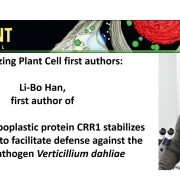
Recognizing Plant Cell first authors: Li-Bo Han
The Plant Cell, The Plant Cell: Author ProfilesLi-Bo Han, First author of The cotton apoplastic protein CRR1 stabilizes chitinase 28 to facilitate defense against the fungal pathogen Verticillium dahliae
Current Position: Associate professor of Haixia institute of Science and Technology, Fujian Agriculture And Forestry University, Fuzhou, China
Educations:…
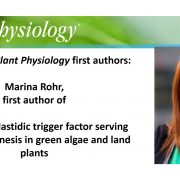
Recognizing Plant Physiology first authors: Marina Rohr
Plant Physiology, Plant Physiology: Author ProfilesMarina Rohr, first author of The role of plastidic trigger factor serving protein biogenesis in green algae and land plants
Current Position: PhD student, Molecular Genetics of Eukaryotes, TU Kaiserslautern, Kaiserslautern
Education: M.S in Ecology TU Kaiserslautern
Non-scientific interest: Skiing,…
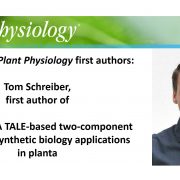
Recognizing Plant Physiology first authors: Tom Schreiber
Plant Physiology, Plant Physiology: Author ProfilesTom Schreiber, first author of Split-TALE - A TALE-based two-component system for synthetic biology applications in planta
Current position: Postdoctoral Researcher, Leibniz Institute of Plant Biochemistry, Department of Cell and Metabolic Biology, Halle (Saale), Germany
Education: PhD in plant biology…
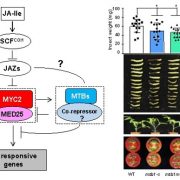
The mechanism by which MYC2 regulates the termination of jasmonic acid signaling
The Plant Cell, The Plant Cell: News
Source: Institute of Genetics and Developmental Biology Published: 2019-01-11. Translated from the original.
As an important plant hormone, jasmonic acid regulates plant defense responses and adaptive growth. When the plant is exposed to pests or other stresses, the active jasmonic…

